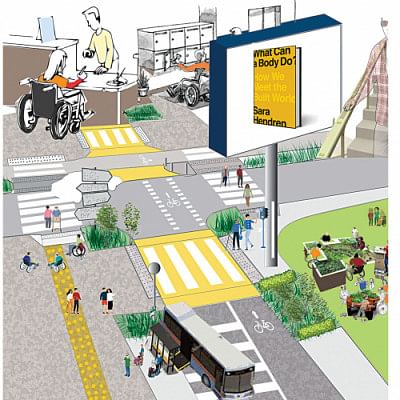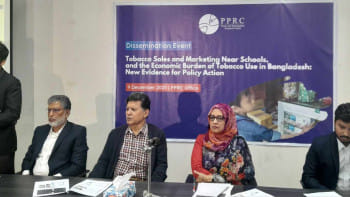How To Build A World For Persons With Disability

Sarah Hendren's What Can a Body Do? How We Meet the Built World (Riverhead Books, 2020) is a collection of case stories in which she helps one understand the lives of those living with disabilities, and how able-bodied perceptions on assistive technology and prosthetics can fail in practice.
The World Health Organization (WHO) estimates that 15 percent of the world's population—a full billion people—live with disabilities. According to the most recent estimates, around 11.4 million people in Bangladesh live with at least one disability, according to the latest Household, Income and Expenditure Survey. And yet, living with disabilities as an experience and as a mode of being continues to be widely misunderstood and, as a result, allowed for very poorly.
Broadly, there are two distinct ideas of what a "disability" even is. The "medical model" defines it as a condition that happens due to some "impairment" of an individual's body. A "social model" takes a broader approach, taking a look at how an impairment (or any other condition) interacts with the world and its beliefs, attitudes, taboos, planning, design and infrastructure, among many other factors. Hendren introduces us to this latter model by mixing scientific literature with individual anecdotes, to reveal that the problems associated with disability are primarily caused by the way the world is built, holding "able" bodies as the standard. Yet able-bodied people are dependent on others too, in need of care and nurturing. So the very act of creating the conceptual categories of "extra" or "special" assistance unfairly privileges some human experiences over others.
As a narrator, instead of presenting them as characters in a case study, Hendren always names the person and adds details about their personality and physical appearance. Such deliberation helps us keep in mind that disability is individualistic and personal. The book begins with Amanda: "an art historian and a curator of contemporary art. She is Australian by birth and still speaks in the swinging lilt of her native accent. She has a comfortable professorial air, at ease in the front of the room in the geometric clothing that's favored by the gallery set, and she's also a Little Person."
As Hendren's engineering students work to create a simple, portable lectern for Amanda, we begin to realize how everyday objects can be exclusive, unfairly forcing some people to have to "cope". A more inclusive world can begin with building a bespoke lectern that is height appropriate for a little person—thereby bringing the room to them, instead of making them reach for the room.
Hendren also discussed the need for a fairer system for pedestrian crossing—the duration of time allotted for the 'walk' sign to be lit up on crosswalks may be insufficient for those with disabilities, or even the aged. She shares with us an example: in Singapore, they have introduced machine readable cards to allow card-bearers an extra few minutes to cross the road.
She also introduces us to baby Niko, who suffers from a rare genetic condition which hinders everyday motor skills including walking and talking. To assist Niko, and promote muscular and neurological development, the Adaptive Design Association designed a chair especially for him made of cardboard. The use of such a commonplace material makes the chair affordable, while also providing room for customisation and upgrades as Niko grows older.
The types of assistive technology Hendren highlights are based on a zero-loss model, meaning that creating disability-friendly public spaces can actually make them more inclusive to everyone—both able bodied and otherwise. Her examples have reason to pique the interest of a reader from Bangladesh. We understand how bad planning and design on a societal level makes so much of our space so hostile, if not somewhat inaccessible. But her examples make one wonder, surely we also have the potential to remove at least some of the barriers to participation for persons with disabilities?
For the longest time, Bangladesh had an overwhelming shortage of rehabilitative services. New legislation was passed in 2018 however, which formalized rehabilitation work and defined the standards for quality of service and qualification of service providers. One can hope that this standardization will help scale up rehabilitative services, perhaps even to the point where individualized solutions like Niko's can be offered in Bangladesh.
As researchers, this book was helpful in reaffirming the need for the kind of research that institutions like BRAC James P Grant School of Public Health, Disabled Rehabilitation and Research Association, and others are doing. To understand the experiences, needs, and wishes of some one billion people better, we must encourage and undertake more research that not only seeks to identify aggregate patterns, but also to place persons with disabilities at the forefront of uncovering their truths.
Adeepto Intisar Ahmed is a research assistant at BRAC James P Grant School of Public Health, where he tries to put his interest in discovering people's truths to practice.
Selima Sara Kabir is a research associate at the BRAC James P Grant School of Public Health, where she combines her love for reading, writing, and anthropological research.

 For all latest news, follow The Daily Star's Google News channel.
For all latest news, follow The Daily Star's Google News channel. 



Comments